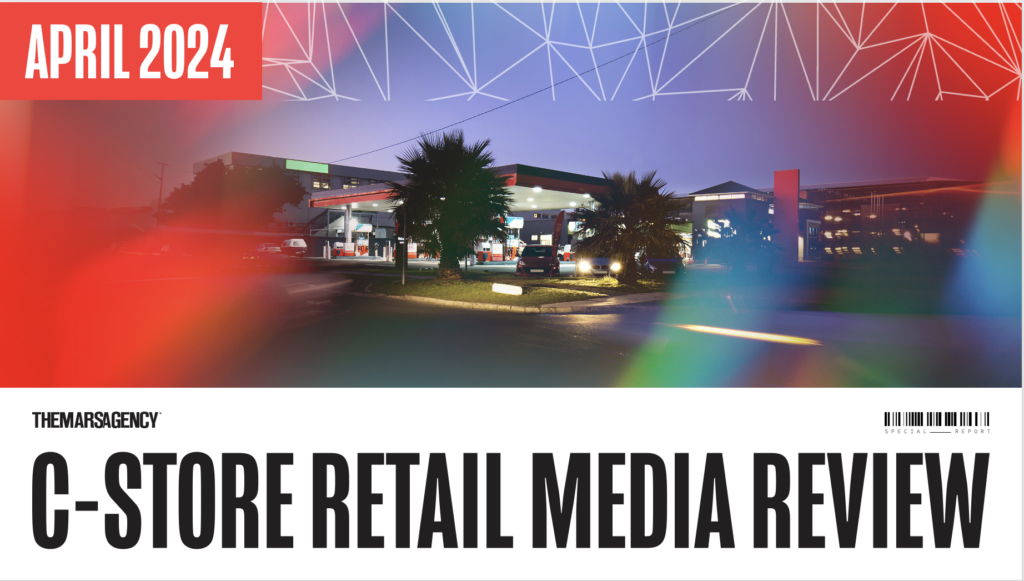Advice for Retail Media Networks: While it’s important to follow industry standards, it’s also critical to stay true to your business model — and your shoppers.
By Michele Roney, Mars UnitedSM Commerce
Not all retail media networks are alike — and for a lot of reasons, they shouldn’t be.
Mars UnitedSM Commerce just released the 7th edition of our Retail Media Report Card, which over the last 18 months has helped move the marketplace forward by presenting a cross-platform guide to the key capabilities of leading networks across the criteria needed to optimally plan, execute and measure effective retail media programs.
Our Report Card is designed to help brands make smarter investment decisions by providing “apples to apples” comparisons of network capabilities across targeting, measurement and reporting, media opportunities, innovation, and partnership. And it’s being used by many retailers to compare their capabilities against industry leaders, identify strengths and weaknesses, and plan future improvements and innovations.

We advise our own retailer clients to use the Report Card as a roadmap that can provide guidelines to excellence — but not, however, as a blueprint for setting their course entirely. While many of the technical capabilities and media opportunities evaluated in the Report Card should be viewed as universal “table stakes” that all retail media networks must provide brand partners, there are others that don’t really align with the business strategies or the shopper behaviors at every retailer.
Data transparency, for one, is certainly a capability that all networks need to deliver, as are most of the criteria in our partnership best practices. But there are other criteria related to measurement metrics and audience targeting that don’t necessarily make sense for retailers across all channels — a concept made clear this quarter as the Report Card begins coverage of the home improvement channel with the introduction of The Home Depot’s Orange Apron Media.
Granted, if you’re a household cleaner brand or other type of CPG that sells through The Home Depot, you’ll probably want Orange Apron Media to provide many of the same capabilities and opportunities that you expect from retail media networks in the mass or grocery channels. But the unique aspects of the home improvement channel and its shoppers need to be considered as well.

Why? Because channel-specific product assortments and purchase cycles need to be considered when determining the best KPIs for measurement. “New to brand” metrics are crucial for laundry detergent, but they’re not as important for a washing machine; the ideal ROAS for a hot water heater isn’t the same as the one for a can of tuna.
Even within the CPG marketplace, channel-level nuances should be considered: Is the availability of a CTV program as strategically relevant at a convenience retailer than it is at Walmart or Kroger. Probably not.
Similarly, brand exposure on the retailer’s website is extremely important in most channels as ecommerce sales and digital engagement continue to grow. But that’s not really true for the extreme value channel, where site traffic and online sales are far less robust. Therefore, having an extensive, tech-enabled inventory of on-platform ad opportunities shouldn’t be as great a priority here as it is in other channels.
These kinds of distinctions will be critical to make as retail media continues its push into the physical store. Right now, too many retailers are looking for a “solution” to their need for in-store advertising opportunities without investigating what will work best in their unique environment or enhance the shopper experience. (Not every store has room for a TV wall.)
Level Set Before You Box Check
Retailers, therefore, shouldn’t be alarmed if they review our Retail Media Report Card and discover that they’re missing some capabilities. To be clear, this very well may indicate that they’ve fallen well behind industry standards in terms of their development.
But, it could mean that the unique aspects of their channel and their shoppers make some of these capabilities unnecessary. That’s why we recommend first evaluating each capability to determine if it is, in fact, relevant to their business and their audience. And if it isn’t, then they shouldn’t adopt it just for the sake of “checking the box.”
In these cases, it’s critical for networks to maintain a complete, up-to-date understanding of industry standards and practices, so they can intelligently explain to brand partners why some of these best-practice capabilities aren’t relevant to their business, and how their own unique suite of offerings is better suited for driving growth in their channel.
Brands, for their part, should keep an open mind about these channel-specific nuances and the unique benefits they might provide rather than demanding the exact-same shopping list of options from every network. It’s far more valuable to have a trusted retailer partner offering unique, relevant solutions than one selling the same media opportunities as every other network.

So, before they lose any sleep over what standard criteria they might be missing, retail media networks need to decide whether those capabilities actually meet the needs of their channel, their business model and their shoppers — because if they don’t, they probably won’t meet the needs of brand advertisers either.
As we continue to build and improve the Retail Media Report Card, we’ll look to incorporate these kinds of channel-specific nuances into our evaluation framework. We took our first step in this direction last April by releasing a special C-Store Retail Media Review.
In the meantime, retailers need to establish their own standards before trying to adopt anyone else’s. Because not all practices are “best” for every media network.

About the Author
As EVP at Mars United Commerce, Michele Roney leads the Retailer CX business, which helps retailers drive growth through marketing, customer experience design, and the creation, operationalization, and monetization of retail media networks. A 32-year company veteran with experience across retail marketing, media and promotion, she has led the ground-up development, management and support of leading networks both in the U.S. and Canada.



